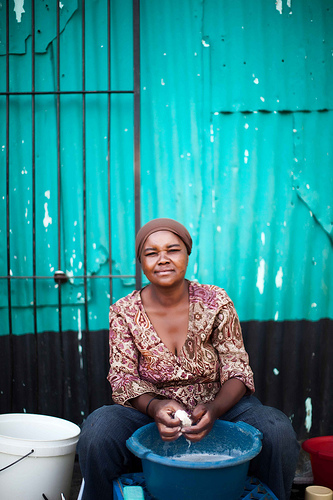 Multinational companies like Procter and Gamble sure think so and they are making large investments into developing areas such as China, India and Africa. On the surface, it makes sense. Not only is this potential group of consumers enormous- according to a recent World Resource Institute report the group (depending on income but usually below $3000/yr based on local purchasing power parity or PPP) is about 4 billion people, but also important are products that companies such as P&G and Unilever are pedaling. In places where sanitation and water are limited or non-existent, products such as soap that doesn’t require water can claim a positive social value.
Multinational companies like Procter and Gamble sure think so and they are making large investments into developing areas such as China, India and Africa. On the surface, it makes sense. Not only is this potential group of consumers enormous- according to a recent World Resource Institute report the group (depending on income but usually below $3000/yr based on local purchasing power parity or PPP) is about 4 billion people, but also important are products that companies such as P&G and Unilever are pedaling. In places where sanitation and water are limited or non-existent, products such as soap that doesn’t require water can claim a positive social value.
These companies understand the size of this market and Unilever in particular has been aggressive in it’s expansion to these consumers, however making profits on products sold to people with very little income has, predictably proven challenging. A recent article from Fortune/CNN Money entitled “Can P&G make money in places where people earn $2 a day?” details P&G’s foray into a rural Chinese market. What are the takeaways from P&G reps watching a Chinese woman wash her hair? Well, for one thing we get this nugget, “It’s a myth to say poor people only want function, they care about beauty. Just like us.” This is kind of like the section in tabloid magazines where we realize celebrities also get coffee and do their laundry and go grocery shopping (don’t ask me how I know that). But, all kidding aside, it is a key point in determining what is important to a new, untapped customer base.
The other issue is one that I’ve touched on in another article about counterfeiting revolving around brand awareness. It is noted that selling products for such a razor thin profit margin to those that can’t afford products that create greater revenue for the company seems odd, but in a sense it’s much like loss-leading. A company like P&G takes a loss or very little profit in order to make a new customer and increase brand awareness. In countries like China and India where the economic growth is generally between 6% and 10% per year, this makes sense. GDP per capita is increasing steadily and therefore so is the middle class aka their new consumer base. The payoff might not be quite as quick in Africa in general although there are definitely countries on the continent that are growing at similar rates.
There’s no question that multinational corporations are rarely at the cutting edge of development, but in some cases, you do have to give them credit. If nothing else, the idea of setting a strategy that may not have immediate benefits is somewhat refreshing and if their products revolutionize the way rural life is lived and more importantly contribute to increased sanitation and prevent communicable diseases that should normally be easily avoided, then all the better.
Image Credit by cinematicjosh via Flickr under a CC license









